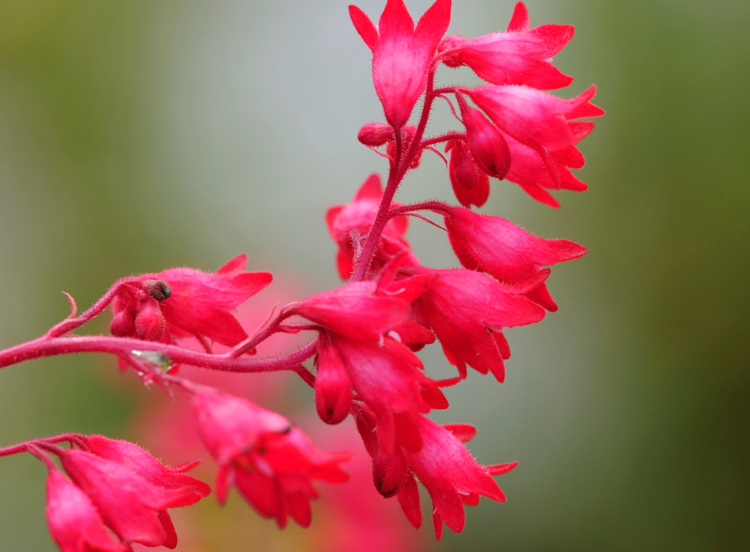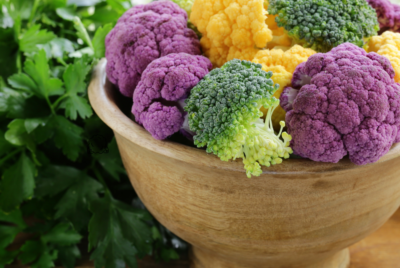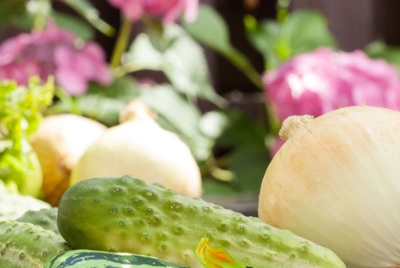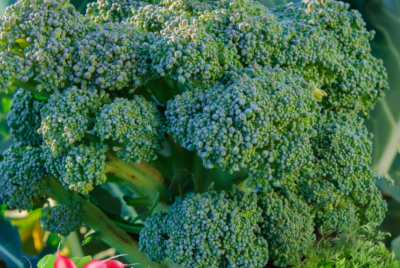Companion Plants for Coral Bells
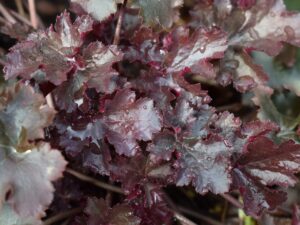
Enhance Your Garden With Coral Bells – The Best Companion Plants To Pair With This Colorful Perennial
Coral Bells, with their vibrant foliage and delicate flowers, can bring a pop of color and charm to any garden. But why stop there when you can enhance their beauty by pairing them with the perfect companion plants? Choosing the right plants to grow alongside coral bells can not only elevate the visual appeal of your garden but also benefit the health and growth of these colorful perennials. Let’s explore some of the best companion plants to consider for creating a stunning and harmonious garden oasis.
Key Takeaways:
- Coral Bells add color: Coral Bells are colorful perennials that can add a pop of color to your garden with their distinctive foliage.
- Pair with contrasting plants: Pair Coral Bells with plants that have contrasting colors to create a visually striking combination in your garden.
- Consider texture: When choosing companion plants, consider the texture of their foliage to create a balanced and visually appealing garden design.
- Choose plants with similar growing conditions: Select companion plants that have similar sun, water, and soil requirements to ensure they thrive alongside your Coral Bells.
- Seasonal interest: Pair Coral Bells with plants that offer seasonal interest, such as blooming flowers or ornamental grasses, to ensure your garden looks beautiful year-round.
Getting to Know Coral Bells
Clearly, coral bells are a fantastic addition to any garden with their vibrant foliage and delicate bell-shaped flowers. Also known by their scientific name Heuchera, these perennials are beloved for their long-lasting color and ability to attract hummingbirds.
Varieties and Colors
On the market, you can find coral bells in a wide range of colors, from deep burgundy and bright coral to light green and silver. Some popular varieties include ‘Palace Purple’ with its stunning purple leaves, ‘Lime Rickey’ for its chartreuse foliage, and ‘Obsidian’ for its dark, almost black leaves.
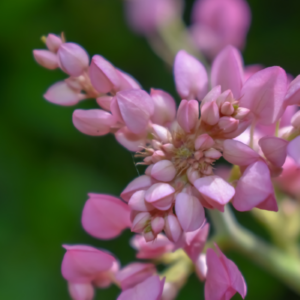
Ideal Conditions for Thriving Coral Bells
Ideal for borders, rock gardens, or containers, coral bells prefer well-draining soil and partial shade. They can tolerate some sun but thrive best in shady spots.
These perennials are relatively low-maintenance, making them perfect for busy gardeners looking to add a pop of color without too much effort.
This perennial is deer resistant as well, making it a great option for those dealing with pesky wildlife in their garden.
Additionally, coral bells are known for attracting beneficial pollinators like bees and butterflies, contributing to a healthy ecosystem in your outdoor space.
Selecting the Best Companion Plants
Considering Colors and Textures
Some gardeners overlook the importance of choosing the right companion plants for coral bells. When choosing companion plants, it’s crucial to consider colors and textures that will complement the vibrant leaves of the coral bells. Contrasting colors such as purple or yellow can really make the coral bells stand out, while plants with delicate textures like grasses can provide a nice balance.
Understanding Growth Patterns and Space
For gardeners looking to enhance their garden with coral bells, understanding growth patterns and space requirements is important. On the surface, coral bells may seem compact, but they can spread over time, especially in favorable growing conditions. It’s crucial to consider the spacing between plants to prevent overcrowding. Planting taller companions towards the back can help create a visually appealing garden with layers of varying heights.
Top Companion Plant Choices for Coral Bells
Perennials That Complement Coral Bells
Unlike annuals, perennials offer the advantage of coming back year after year, which means less replanting and more time enjoying your garden. Some great perennial companions for Coral Bells include Ferns, Bleeding Hearts, and Astilbes. These plants share similar growing conditions and bloom times, creating a harmonious and colorful display in your garden.
Annuals and Bulbs to Brighten Your Garden
To add a pop of seasonal color to your garden, consider planting annuals and bulbs alongside your Coral Bells. Annuals like Petunias, Begonias, and Calibrachoas can provide continuous blooms throughout the summer, while bulbs like Tulips and Dahlias can add variety and depth to your garden beds.
With a combination of annuals and bulbs, you can create a vibrant and dynamic garden that changes with the seasons, keeping your outdoor space looking fresh and inviting all year round. Experiment with different color combinations and planting arrangements to find the perfect mix for your Coral Bells.
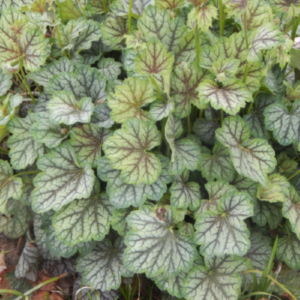
Tips for Planting and Care
For successful planting and care of coral bells, follow these simple tips:
- Choose a planting location that receives partial to full shade for optimal growth.
- Ensure well-draining soil to prevent root rot and other diseases.
- Water regularly, especially during dry spells, to keep the soil consistently moist.
- Apply a layer of mulch around the base of the plant to help retain moisture and suppress weed growth.
- Feed with a balanced fertilizer in the spring to promote healthy growth and vibrant foliage.
Thou, remember to deadhead spent flowers to encourage continuous blooming and remove any damaged or diseased leaves to maintain the overall health of the plant.
How to Plant for Success
Planting coral bells for success involves choosing the right location with adequate shade and well-draining soil. Dig a hole twice the size of the root ball and backfill with soil, gently patting it down around the plant. Water thoroughly after planting to help the roots establish and continue to monitor moisture levels in the soil.
Maintaining Your Garden’s Beauty
For maintaining the beauty of your garden with coral bells, regular care is imperative. Deadhead spent flowers, remove any damaged leaves, and monitor for pests or diseases. Water consistently and feed with a balanced fertilizer to support healthy growth. Consider dividing overcrowded plants every 3-4 years to rejuvenate their vigor and ensure continuous blooms.
Understanding the needs of coral bells and their companion plants is key to creating a stunning garden display. These versatile perennials thrive in cooler climates and provide year-round interest with their colorful foliage. By following these planting and care tips, you can enjoy a vibrant and flourishing garden with coral bells as the star attraction.
Final Words on Companion Plants for Coral Bells
Now that you have learned about the best companion plants to pair with coral bells, it’s time to enhance your garden with beautiful and colorful perennial combinations. For more inspiration and stunning perennial planting ideas. Get ready to create eye-catching and harmonious garden beds with coral bells as the star of the show!
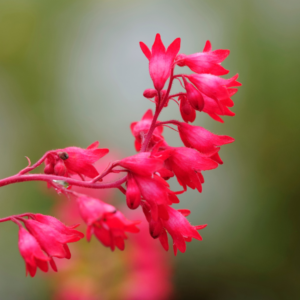
FAQ’s about Companion Plants for Coral Bells
Q: What are coral bells?
A: Coral bells, also known as Heuchera, are colorful perennial plants that are prized for their vibrant foliage and delicate bell-shaped flowers.
Q: What are some popular companion plants to pair with coral bells?
A: Some popular companion plants to pair with coral bells include ferns, hostas, astilbe, foamflower, and bleeding heart. These plants complement the colors and textures of coral bells beautifully.
Q: How do I care for coral bells and their companion plants?
A: Coral bells and their companion plants thrive in well-draining soil with partial to full shade. Make sure to water them regularly and provide adequate air circulation to prevent diseases. Remove any dead or yellowing leaves to encourage new growth.
Q: Can I grow coral bells and their companion plants in containers?
A: Yes, both coral bells and their companion plants can be grown in containers. Choose a large pot with good drainage, use a high-quality potting mix, and place them in a location that receives the right amount of sunlight for the specific plants you are growing.
Q: When is the best time to plant coral bells and their companion plants?
A: The best time to plant coral bells and their companion plants is in the spring or fall. This allows the plants to establish their root systems before the heat of summer or the cold of winter sets in. Be sure to water them well after planting to help them get off to a healthy start.
Brussell Sprouts Companion Plants

